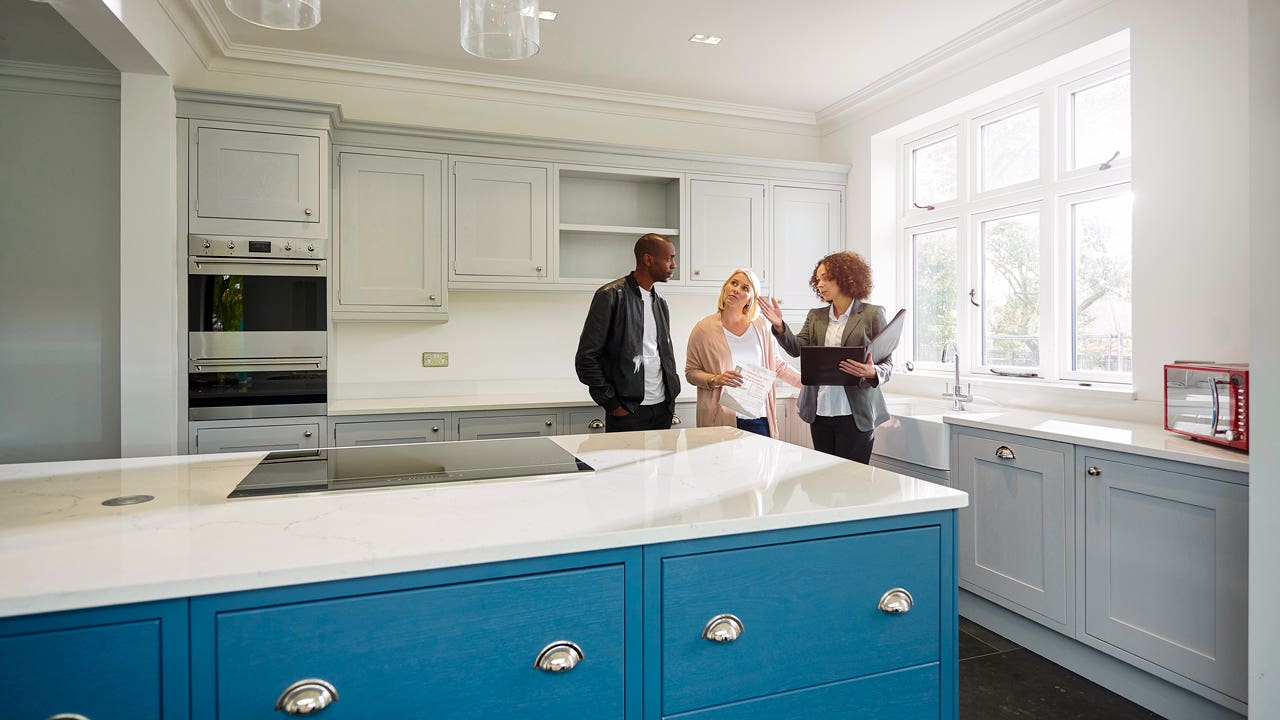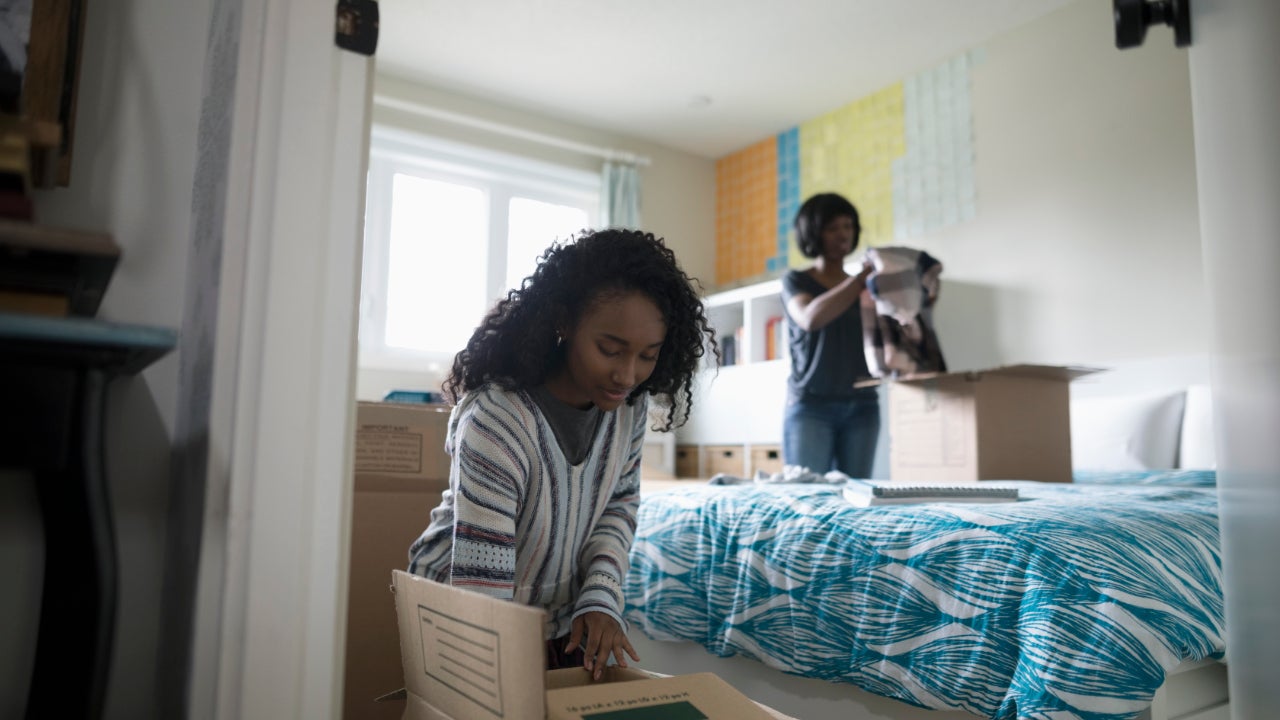Checklist for selling a house: 15 things to do

Selling your house is often a bittersweet experience, but it can also be a daunting one if you aren’t sure how it works. To simplify the process, it’s important to understand what needs to be done before the property gets listed and what to do after accepting an offer. And the best way to accomplish that: Put it all down in writing, in a handy list.
We’ve put together a home selling checklist of things you should do before, during and after you sell your home. These tips will help you prepare and know what to expect throughout the process.
Things to do before you list your home
| Hire a real estate agent | |
| Focus on curb appeal | |
| Declutter the interior | |
| Remove personal items on display | |
| Think about staging |
Hire a real estate agent
One of the very first things to do before selling your house is to hire a real estate agent. Unless there’s someone you’ve had a good experience with in the past — perhaps the Realtor who found you your current abode? — ask local friends or family members for a recommendation. Don’t be afraid to interview a few real estate agents before you decide to hire one. Each has their unique strengths, so make sure to choose one with knowledge of your location and market.
Focus on curb appeal
When a potential buyer tours your home, the first thing they will see is the exterior. Before listing your home on the market, spend some time making upgrades that will improve the curb appeal of your house. Adding curb appeal can be easy and budget-friendly. Here are a few suggestions:
- Paint the front door
- Power wash the windows
- Power wash the exterior and external fixtures (decks, patios)
- Plant flowers or bushes
- Repave the front walkway
- Replace the mailbox
Clean up the interior
You might not mind living in organized chaos, but it’s not the best look when you’re selling your home. Focus your attention on decluttering, organizing and cleaning the interior before potential buyers come in. Go through your belongings and throw away or donate things you no longer need or use. Don’t be tempted to just shove things out of sight, either — buyers will open closets and eyeball basements and attics to get a sense of how much storage room is available. While making major renovations usually isn’t recommended, it might not hurt to touch up the paint on walls or ceilings, especially if it’s peeling or cracking.
Remove personal items on display
As you’re tidying your home, it’s a good idea to remove personal items that are on display. You might love your wall of family portraits, but it makes it difficult for potential buyers to envision themselves living in the home. While you’re at it, make sure that any valuable items or potentially sensitive information is put away and out of sight. That includes things like mail, financial statements, password books, jewelry and electronics.
Think about staging
If you don’t have a sharp eye for interior design, hiring a professional to stage your home can be helpful. A stager will choose furniture pieces and decor to elevate the style of your home based on current trends that buyers are looking for. Staging your home comes at a cost, but it may be the key to selling your home faster or for more money. Your real estate agent might recommend someone they usually work with.
Things to do while your home is listed
| Communicate with your real estate agent | |
| Keep your home clean (if you’re living there) | |
| Be patient |
Communicate with your real estate agent
Once your home is officially listed on the MLS and potential buyers are starting to tour the house, it’s important to keep in contact with your real estate agent. Unless you’re living in the house, you probably won’t be notified of every showing. However, your agent should keep you in the loop. Keep an open line of communication and talk regularly to discuss things like price changes, new marketing tactics and other strategies that could help the house sell more quickly.
Keep your home clean (if you’re living there)
If you are living in the home while it’s listed, it’s extremely important to keep it as clean as possible. Potential buyers can schedule tours at the last minute, which doesn’t give you much time to tidy up before they tour the property. So, make it a habit to clean up and organize every night to avoid a mess accumulating. While you can make plans to move, consider delaying packing up until after the house has sold.
Be patient
Even in a seller’s market, your house is not guaranteed to sell quickly. It could take several weeks or several months to start getting offers. It all depends on the characteristics of your home, the demand, and ultimately, the listing price. While your home sits on the market, the best thing to do is be patient. Communicate your expectations to your real estate agent but stay open to making changes (including price drops) that could help the house sell more quickly.
Things to do after accepting an offer
| Sign the purchase agreement | |
| Address due diligence repairs | |
| Start packing your things |
Sign the purchase agreement
After you formally accept the buyer’s offer, it’s time to sign the purchase agreement. This is a document that the buyer and seller both sign, which outlines the terms and conditions of the sale. This document legally binds the buyer to the transaction, assuming the terms and conditions are met. Before signing this document, it’s important to review it with your Realtor and a real estate attorney to make sure it’s accurate.
Address due diligence repairs
It’s common for a buyer to only agree to purchase your home after certain contingencies are met or repairs made. For example, you might agree to replace broken appliances or fix a section of the roof that’s damaged. Before you officially close on the house, you must make these repairs, which are outlined in the purchase agreement. If you don’t make the agreed-upon repairs, the buyer has legal grounds to walk away from the deal.
Start packing your things
If you’re still living in the home, now is the time to start packing your belongings. The closing process generally takes anywhere from 30 to 50 days, so you have a good amount of time to pack and organize before you need to be out of the house. In addition, you and the buyer might agree to a specific move-out date depending on your respective residential situations. However, it’s usually better to start packing sooner than later so you can prepare for closing.
Things to do for closing
| Get your documents together | |
| Hire a cleaning crew | |
| Do a final walk-through | |
| Shut off the utilities |
Get your documents together
When you attend the closing, you’ll probably be asked to bring some house-related documentation (in addition to the keys). Here are some of the documents you should be prepared with:
- Documentation confirming repairs were made
- Garage door openers and codes
- Cashiers check (if you are paying for a portion of the buyer’s closing costs)
- Utility bills
- Property tax documents
- Warranties for home appliances or home warranty
- Instructions for operating smart home or security systems
Hire a cleaning crew
After all your belongings are boxed up and out of the house, you might consider hiring a professional cleaning crew before the new owners move in. In the purchase agreement, sellers are generally required to make the home “broom clean” before officially vacating. That means sweeping and mopping floors, cleaning out the refrigerator, dusting vents and ceiling fans, and vacuuming tight corners and under appliances.
Have the final walk-through
It’s customary for buyers to do a final walk-through of the property within a business day prior to the closing date. It allows them to confirm that all promised repairs were made and that the house is in the same condition it was in when they agreed to purchase it. The buyer can test appliances and home systems, open and close all doors, etc. As the seller, you don’t need to be present for the final walk-through, but know that it’s something that the buyer may request.
Shut off the utilities
The day after closing, and after you have fully moved out, you should shut off the utilities, Wi-Fi and cancel any subscriptions. This is especially important if the home will sit empty for a while before the new owner moves in. Contact your gas, water, sewer, electrical and cable/internet companies and terminate your service, or move the service to your new place (if the municipality serves the area). The new homeowner is responsible for setting up their own utilities when they move in.
Summarizing the home-seller’s checklist
Selling your home is a big decision and it’s often a lengthy process. To reduce the stress, understand what will happen during every step of the process and make sure to stay informed. Using a checklist for selling a house can help you stay organized and prepare for what’s to come, from initial listing to closing day.
You may also like

How to sell a house by owner in Oregon

How to buy a house for sale by owner

8 things to do immediately after buying a house



